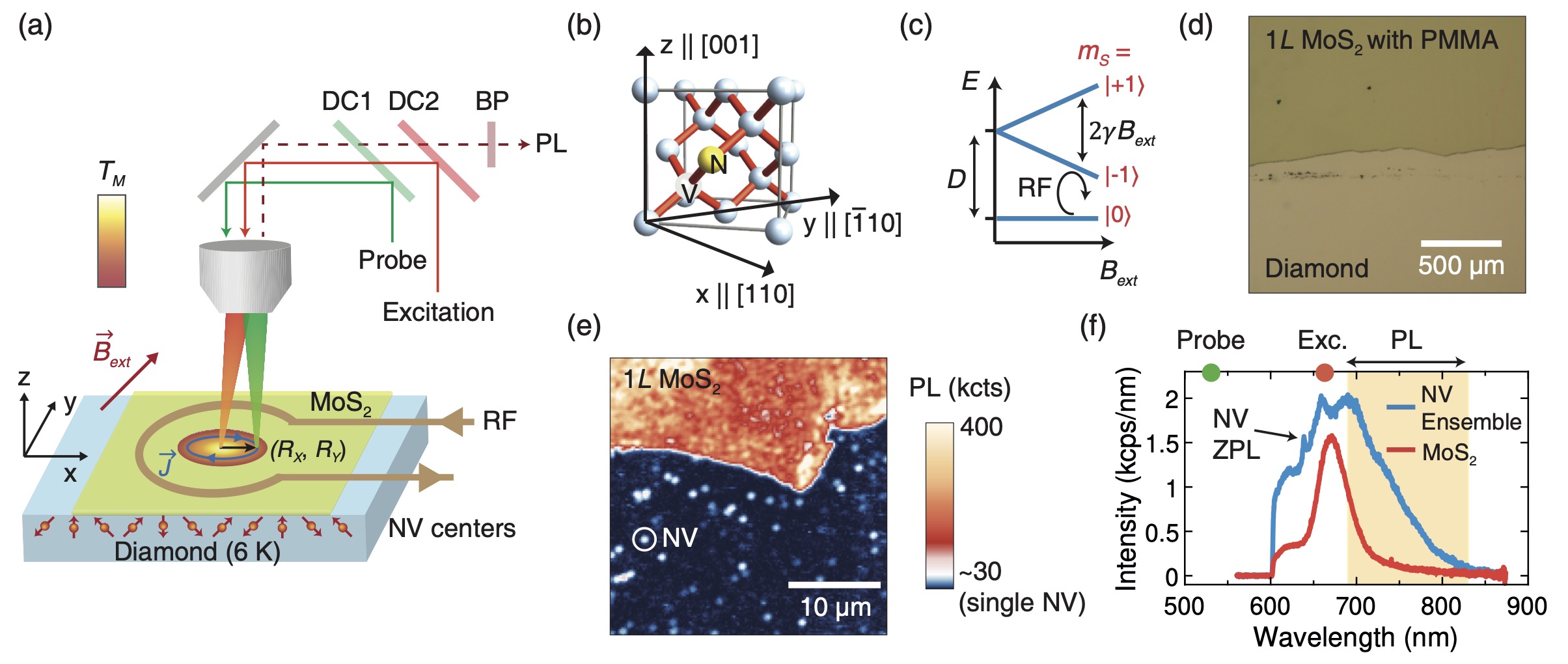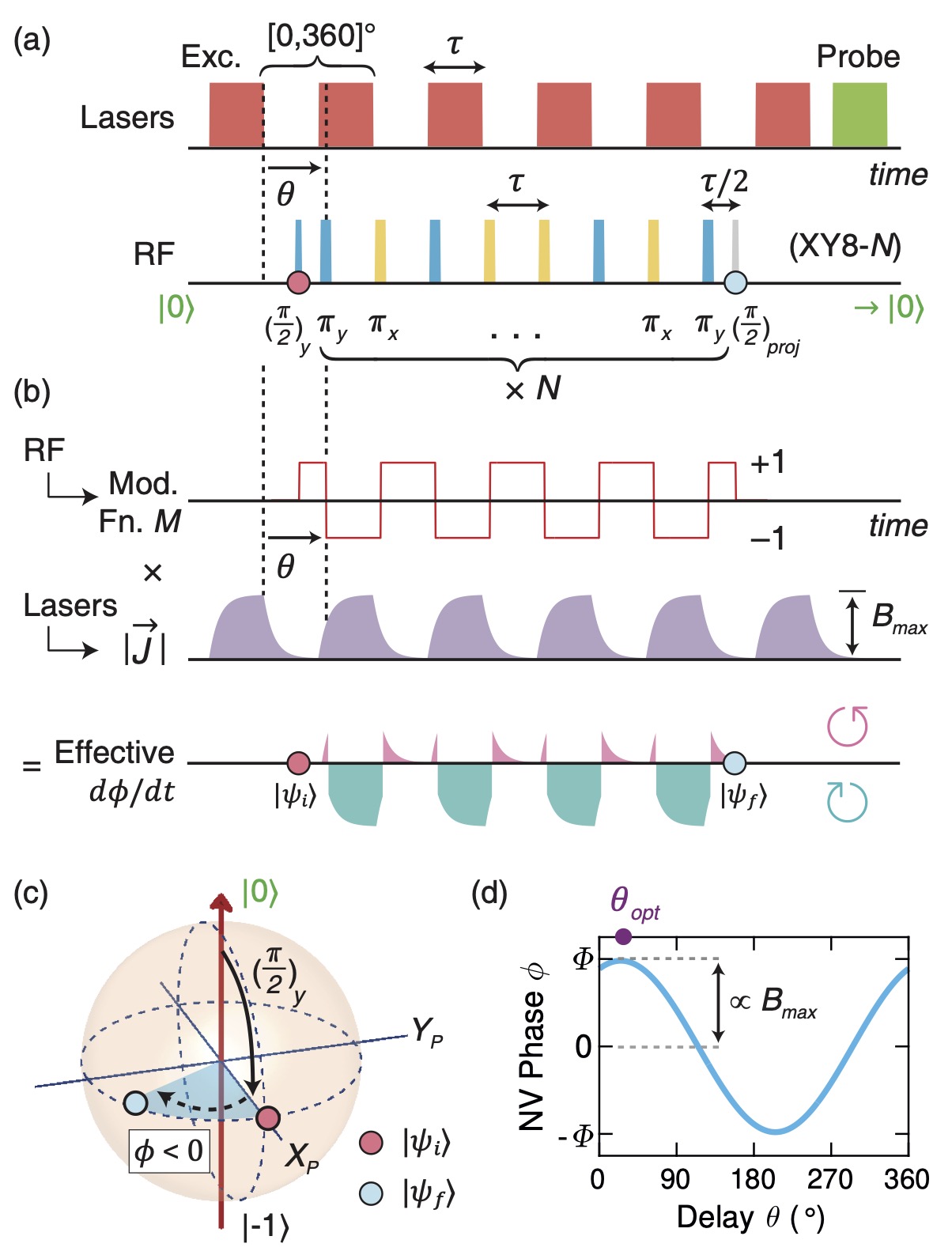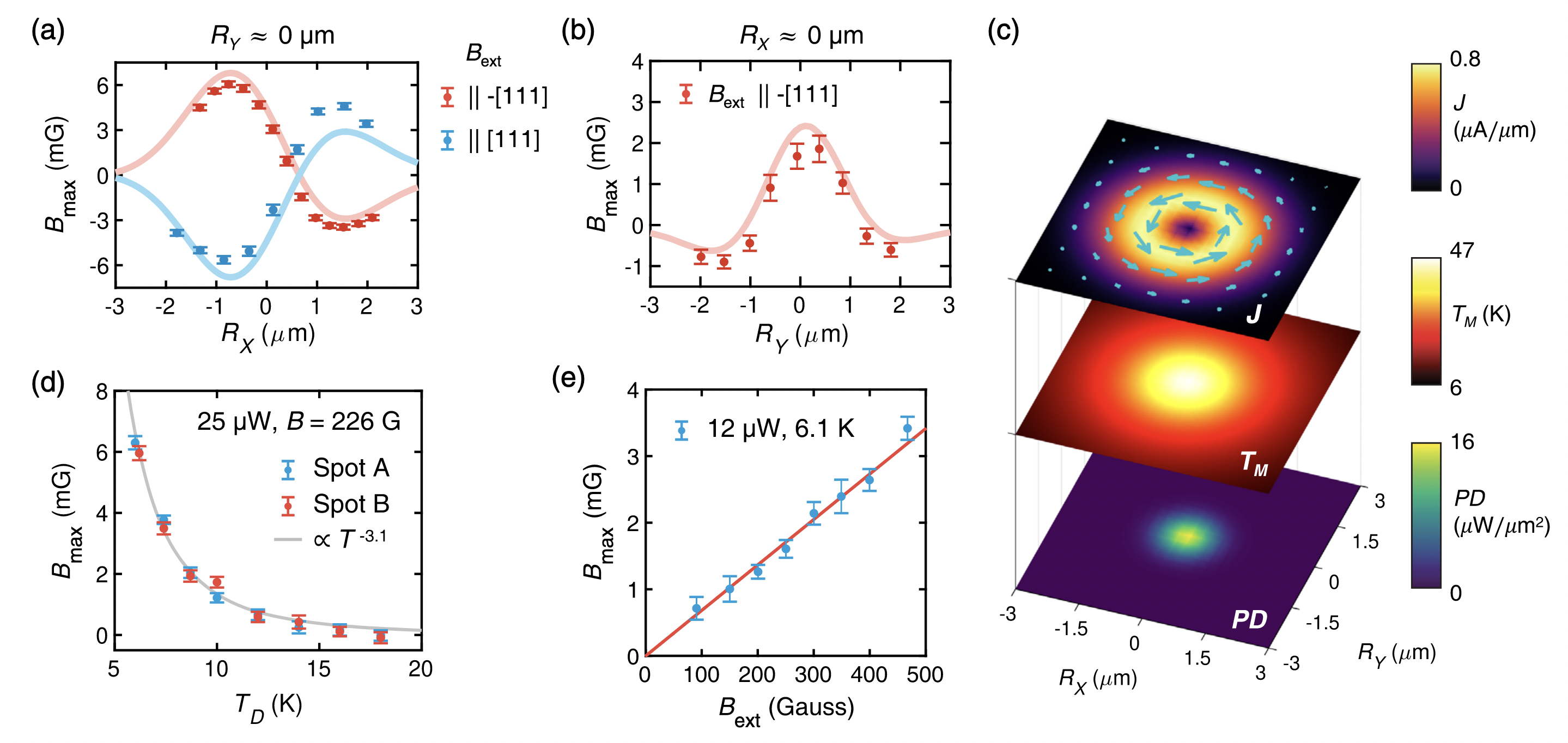Two-dimensional materials are promising platforms of new physics and new devices. However, their reduced volume makes standard measurements techniques difficult. Transport measurements, while sensitive to many phenomena, miss local effects. We implement a quantum lock-in measurement with NV centers to measure small magnetic fields arising from local effects in the two-dimensional material MoS2. This local measurements allows us to see circulating photocurrents arising from a photo-Nernst effect that would otherwise be invisible. The lock-in measurement also reveals spatial and temporal dynamics. These spatiotemporal capabilities establish an optically accessed, local probe for optoelectronic phenomena, ideally suited to the emerging class of two-dimensional materials, for which making contacts is challenging and can alter the intrinsic material properties.
Our experiments use multiple laser tones to both address the NV centers and excite the MoS2. We are careful to spectrally filter emission from the MoS2 to reduce the impact on our NV signal.

The quantum lock-in measurement relies on pulsed excitation of photocurrents synchronized to a dynamical decoupling sequence applied to the NVs. This produces a modulated magnetic field, which imparts a phase to the NVs. The lock-in procedure filters out any signal that is not at the NV flip frequency.

Below, we map out the current and temperature distribution produced by the photo-Nernst effect in our sample, measuring magnetic fields of down to 1mG.

Details can be found in our manuscript:
B. B. Zhou, P. C. Jerger, K.-H. Lee, M Fukami, F. Mujid, J. Park, D. D. Awschalom, Phys. Rev. X 10, 011003 (2020).